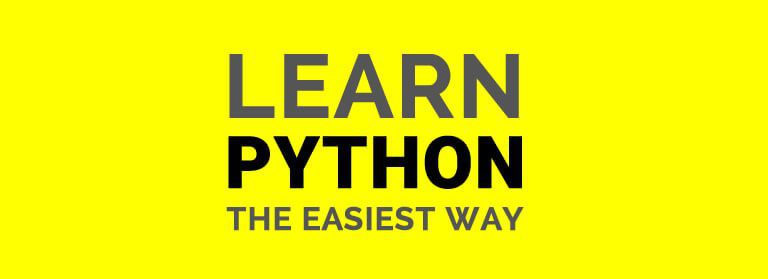Python For Web Development is The Best and No.1 Choice


An Overview on Python For Web Development
Python For Web Development: Web development is a dynamic field that requires developers to make strategic decisions, especially when it comes to choosing the right programming language. Python, with its exceptional features of simplicity, readability, and versatility, has positioned itself as a leading player in the ever-evolving landscape of web development. This comprehensive guide aims to explore the multifaceted aspects of leveraging Python for web development, shedding light on common queries that often arise among developers, such as “Can you use Python for web development?” and “How to use Python for web development?”
Python’s rise to prominence in web development is attributed to its elegant syntax and easy-to-read code, making it an ideal choice for developers across skill levels. The language’s versatility allows it to cater to a wide range of web development needs, from creating simple websites to handling complex, data-intensive applications. Python’s ability to seamlessly integrate with various frameworks and tools further enhances its appeal, providing developers with the flexibility needed to tackle diverse project requirements.
The first common query, “Can you use Python For Web Development?” can be unequivocally answered with a resounding “Yes!” Python’s adaptability extends seamlessly into the realm of web development, making it a go-to language for developers looking to build scalable, efficient, and maintainable web applications. Its popularity is evident in the extensive use of Python across a myriad of domains, from startups to tech giants, underlining its universal applicability in web development.
The second query, “How to use Python for web development?” is equally important and requires an in-depth exploration of the tools and frameworks available. Key frameworks like Django and Flask have played pivotal roles in shaping Python’s prowess in web development. Django, known for its high-level architecture and “batteries-included” philosophy, empowers developers to create robust applications with minimal effort. On the other hand, Flask offers a lightweight and modular approach, allowing developers to tailor their web development stack based on project requirements.
The comparison between PHP and Python for web development is another crucial aspect to consider. While PHP has traditionally been synonymous with web development, Python’s ascent has challenged this status quo. Python’s clean syntax, readability, and the availability of powerful frameworks have positioned it as a strong competitor to PHP. The ease of integration with other technologies and the ability to handle complex tasks give Python an edge in the ever-evolving web development landscape.
For those venturing into Python for web development, tutorials serve as invaluable resources. A well-structured tutorial can guide developers through the basics, introduce them to key frameworks, and provide best practices for efficient development. Whether you’re a beginner seeking to learn Python or an experienced developer transitioning to the language, a tutorial can significantly expedite the learning process, ensuring a solid foundation in web development with Python.
In conclusion, Python’s role in web development is characterized by its simplicity, versatility, and robust frameworks. Whether answering the question of “Can you use Python For Web Development?” with an emphatic “Yes,” or exploring the nuances of “How to use Python for web development?” – the language stands as a powerful tool for developers. As the web development landscape continues to evolve, Python remains a constant force, enabling developers to create dynamic, scalable, and efficient web applications. Embracing the power of Python opens doors to a world of possibilities in the ever-expanding realm of web development.
Understanding the Basics
Python’s allure in the realm of web development lies in its clean syntax and accessibility, making it an ideal choice for developers across experience levels. Its straightforward syntax is a boon for beginners, allowing them to focus on learning the fundamentals of programming without unnecessary complexity. Seasoned developers, too, appreciate Python’s readability, as it streamlines the coding process, fostering collaboration and code maintenance.
The language’s ease of learning is a key factor that contributes to its popularity. Python’s gentle learning curve enables beginners to grasp programming concepts quickly, encouraging a smoother transition into web development. Its user-friendly nature doesn’t compromise its power; instead, it provides a solid foundation for developers to delve into more complex aspects of web development as they progress.
Python’s strength extends beyond its syntax and learning curve to its extensive standard library. The library serves as a treasure trove of pre-built modules and packages, saving developers time and effort. This robust standard library equips developers with tools to handle various tasks, from basic file operations to complex networking functionalities, enhancing productivity and reducing the need for reinventing the wheel.
Moreover, Python’s web development ecosystem boasts frameworks like Django and Flask, further elevating its capabilities. Django, with its high-level design philosophy and comprehensive feature set, facilitates rapid development of sophisticated web applications. Flask, known for its simplicity and modularity, provides flexibility for developers to tailor their web development stack according to project requirements.
In essence, Python’s clean syntax, accessibility, extensive standard library, and powerful frameworks make it a compelling choice for web development. Whether you’re just starting your programming journey or are a seasoned developer seeking a reliable and efficient language, Python’s versatility positions it as a go-to tool for creating robust and scalable web applications.
Can You Use Python for Web Development?
Python’s versatility in web development is a resounding affirmation, as the language seamlessly adapts to the diverse needs of developers. The availability of powerful frameworks and tools amplifies Python’s capabilities, enabling developers to embark on a spectrum of projects, ranging from straightforward websites to intricate, data-intensive applications.
One of Python’s standout features is its readability and expressiveness. The language’s clean syntax and readability make it easier for developers to comprehend code, leading to more efficient collaboration and reduced likelihood of errors. This readability factor not only facilitates smoother team workflows but also accelerates development cycles. With Python, developers can write code more quickly and concisely, translating to faster turnaround times for web projects.
In the realm of web development, where efficiency and adaptability are paramount, Python emerges as an excellent choice. Its versatility allows developers to navigate the complexities of modern web applications effortlessly. Whether tackling the nuances of front-end development or managing intricate back-end logic, Python’s flexibility shines through. This adaptability is particularly advantageous for developers working on a spectrum of projects, from small-scale websites to large-scale, data-centric applications.
Ultimately, Python’s versatility is a key factor that contributes to its widespread adoption in the web development community. Its ability to cater to a broad range of project complexities, coupled with the efficiency gained through readability and expressiveness, positions Python as a language of choice for developers looking to navigate the challenges of web development with confidence and ease.
One of Python’s standout features is its readability and expressiveness. The language’s clean syntax and readability make it easier for developers to comprehend code, leading to more efficient collaboration and reduced likelihood of errors. This readability factor not only facilitates smoother team workflows but also accelerates development cycles. With Python, developers can write code more quickly and concisely, translating to faster turnaround times for web projects.
In the realm of web development, where efficiency and adaptability are paramount, Python emerges as an excellent choice. Its versatility allows developers to navigate the complexities of modern web applications effortlessly. Whether tackling the nuances of front-end development or managing intricate back-end logic, Python’s flexibility shines through. This adaptability is particularly advantageous for developers working on a spectrum of projects, from small-scale websites to large-scale, data-centric applications.
Ultimately, Python’s versatility is a key factor that contributes to its widespread adoption in the web development community. Its ability to cater to a broad range of project complexities, coupled with the efficiency gained through readability and expressiveness, positions Python as a language of choice for developers looking to navigate the challenges of web development with confidence and ease.
How to Use Python for Web Development
Harnessing the power of Python For Web Development entails navigating a rich landscape of frameworks and tools, each designed to address specific needs and preferences. Two prominent frameworks, Django and Flask, exemplify the diverse approaches developers can take when crafting web applications.
Django, often hailed as a high-level web framework, is renowned for its emphasis on rapid development. Guided by the “batteries-included” philosophy, Django comes equipped with a myriad of built-in features and tools, streamlining the development process. This comprehensive approach simplifies common tasks, such as authentication, database management, and URL routing, enabling developers to focus on crafting the unique aspects of their applications. Django’s convention over configuration principle further accelerates development by providing sensible defaults, reducing the need for extensive boilerplate code.
In contrast, Flask adopts a more lightweight and modular approach, offering developers greater flexibility and freedom. With Flask, developers have the autonomy to choose the specific components and libraries they need for their projects. This minimalistic framework provides a solid foundation for building web applications while leaving room for customization. Flask’s simplicity and modularity make it an attractive choice for developers who prefer a more hands-on and tailored approach to their web development stack.
The versatility embedded in these frameworks caters to a spectrum of project requirements. Django, with its all-inclusive nature, suits projects where speed and convention play pivotal roles. It excels in scenarios where a standardized and cohesive development environment is preferred. On the other hand, Flask’s modularity makes it an excellent choice for developers seeking a more granular level of control, allowing them to assemble a stack tailored precisely to their project’s unique demands.
Ultimately, the choice between Django and Flask, or the integration of both in different parts of a project, depends on factors such as project complexity, developer preferences, and scalability requirements. Python’s adaptability shines through in the versatility of these frameworks, providing developers with the tools needed to bring their web development visions to life in a manner that aligns with their unique goals and priorities.
PHP vs. Python for Web Development
The perennial PHP vs. Python debate has been a focal point in the web development discourse. Traditionally, PHP held a stronghold in the web development domain, but Python’s ascent has led to a significant paradigm shift. Python’s clean syntax, readability, and the presence of robust frameworks have positioned it as an increasingly preferred choice over PHP.
Python’s syntax is renowned for its clarity, making it easier for developers to write and maintain code. This readability factor, coupled with the availability of powerful frameworks like Django and Flask, empowers developers to create sophisticated web applications efficiently. Python’s adaptability and ease of integration with other technologies further contribute to its prominence, allowing developers to seamlessly incorporate it into diverse ecosystems.
The ability of Python to handle complex tasks, along with its growing community support, solidifies its standing in the web development arena. As the debate continues, Python’s strengths, including readability and versatility, have reshaped the landscape, prompting many developers to embrace it as their language of choice for web development.
Python for Web Development Tutorial
Embarking on a Python web development journey is an exciting venture, and a well-crafted tutorial serves as an invaluable compass for navigating this path. Tutorials offer a structured and systematic approach, providing learners with a step-by-step guide to grasp the basics, explore key frameworks, and adopt best practices.
For beginners, a Python web development tutorial acts as a foundational resource, offering a gentle introduction to the language’s syntax, data structures, and fundamental concepts. Understanding these basics lays the groundwork for effective coding practices, ensuring that newcomers build a strong understanding of Python’s core principles before delving into the complexities of web development.
For experienced developers transitioning to Python, tutorials cater to a different set of needs. They serve as a bridge between existing knowledge and the specific nuances of Python web development. Such tutorials often highlight the language’s unique features, conventions, and best practices within the context of web development, facilitating a smooth transition for developers accustomed to other languages.
A well-structured tutorial doesn’t just stop at the fundamentals; it extends to cover key frameworks integral to Python web development. Frameworks like Django and Flask are often focal points, providing learners with hands-on experience in building real-world applications. Understanding these frameworks equips developers with the tools to efficiently create scalable and robust web applications.
Moreover, tutorials often emphasize best practices, ensuring that developers adopt coding standards, adhere to security measures, and implement scalable architectures. These best practices are crucial for maintaining code quality, fostering collaboration in larger development teams, and ensuring the long-term sustainability of web projects.
In essence, whether you’re a novice or a seasoned developer, a well-structured Python web development tutorial accelerates the learning process. It serves as a roadmap, guiding learners through the intricacies of Python, its frameworks, and the best practices that underpin successful web development projects. As the tutorial unfolds, developers gain the confidence and skills needed to embark on their Python web development journey with proficiency and purpose.
JavaScript vs. Python for Web Development
The dynamic landscape of web development often requires a combination of technologies to create seamless and interactive user experiences. In this context, both JavaScript and Python play pivotal roles, each excelling in different aspects of the web development process.
JavaScript, primarily recognized as a client-side scripting language, is renowned for its prowess in creating dynamic and interactive user interfaces. It operates directly within the user’s browser, allowing developers to manipulate the Document Object Model (DOM) and respond to user actions in real-time. JavaScript’s asynchronous nature further enhances its ability to create responsive and engaging web applications. Front-end frameworks like React, Angular, and Vue.js leverage the power of JavaScript to streamline the development of user interfaces, offering a rich and immersive user experience.
On the other hand, Python, with its server-side capabilities, complements JavaScript by handling server logic efficiently. Python’s syntax is known for its readability and ease of learning, making it an excellent choice for back-end development. Web frameworks like Django and Flask empower developers to build robust server-side applications, manage databases, and handle business logic effectively. Python’s versatility extends beyond web development, allowing it to serve various roles within a tech stack, from data analysis to machine learning.
The synergy between JavaScript and Python is often leveraged in full-stack development. Full-stack developers utilize both languages to create a comprehensive solution, with JavaScript powering the front end for a dynamic user interface and Python handling the back end for server-side processing. This combination enables the creation of robust, responsive, and feature-rich web applications.
The advantages of using JavaScript and Python together go beyond their individual strengths. The clear separation of concerns between client-side and server-side development allows for modular code structures, making projects more maintainable and scalable. Additionally, the rich ecosystem of libraries, frameworks, and tools available for both languages enhances developer productivity and accelerates the development process.
In conclusion, the synergy between JavaScript and Python is a powerful combination in the realm of web development. While JavaScript excels in creating dynamic user interfaces on the client side, Python’s server-side capabilities seamlessly handle the logic behind the scenes. This collaboration is often embraced in full-stack development, where the strengths of both languages come together to create robust, responsive, and feature-packed web applications that cater to the diverse needs of modern web development.
Learn Python for Web Development
Embarking on the journey of learning Python for web development is a rewarding pursuit, especially given the plethora of resources, courses, and supportive communities available online. Python’s popularity in web development is matched by the wealth of educational materials that cater to aspiring developers, regardless of their experience level.
Online resources provide a diverse range of learning materials, from introductory guides to in-depth tutorials and interactive coding platforms. These resources often cover Python’s syntax, its application in web development, and hands-on exercises that gradually elevate the learner’s proficiency. Aspiring developers can choose resources that align with their learning preferences and pace, ensuring a customized and effective learning experience.
Courses dedicated to Python For Web Development offer structured curricula designed to guide learners through the essentials of the language and its application in creating web applications. These courses often include practical exercises, projects, and assessments to reinforce theoretical knowledge and provide a holistic understanding of Python’s role in web development.
Community support plays a crucial role in the learning process. Engaging with online forums, discussion groups, and social media communities dedicated to Python allows learners to seek guidance, share experiences, and collaborate with peers. The collaborative nature of these communities fosters a supportive environment where learners can overcome challenges, exchange ideas, and stay motivated throughout their learning journey.
Hands-on projects are instrumental in reinforcing theoretical knowledge and building practical skills. By applying Python concepts to real-world scenarios, learners gain a deeper understanding of how the language functions in a web development context. This experiential learning approach enhances problem-solving skills and boosts confidence, making the transition from theory to practice seamless.
In conclusion, learning Python For Web Development is an enriching experience facilitated by a plethora of online resources, courses, and a vibrant community. Embracing Python’s simplicity, community support, and engaging in hands-on projects are key elements that can significantly accelerate the learning process and solidify one’s understanding of Python in the context of web development. Aspiring developers are encouraged to explore these avenues and embark on a journey that promises both proficiency and fulfillment in the world of Python web development.
JavaScript or Python for Web Development?
In the dynamic landscape of web development, the choice between JavaScript and Python often revolves around the specific needs and requirements of a given project. These two languages, while serving different roles in the development stack, complement each other seamlessly, contributing to the creation of robust and feature-rich web applications.
JavaScript, a front-end powerhouse, is essential for handling dynamic content and user interactions. Operating directly within the user’s browser, JavaScript empowers developers to manipulate the Document Object Model (DOM), dynamically update content, and respond to user actions in real-time. Front-end frameworks and libraries such as React, Angular, and Vue.js leverage JavaScript to enhance the user experience by creating interactive, responsive, and visually appealing interfaces. The versatility of JavaScript also extends to asynchronous programming, enabling the development of asynchronous and non-blocking applications, a crucial aspect for delivering smooth user experiences.
On the other side of the spectrum, Python For Web Development shines as a back-end language, proficient in managing server-side logic, handling data processing, and executing server-side operations. Python’s readability, simplicity, and extensive standard library make it an excellent choice for server-side development. Popular web frameworks like Django and Flask empower developers to build scalable and maintainable server-side applications, manage databases, and implement business logic efficiently. Python’s versatility extends beyond web development, making it a go-to language for various tasks such as data analysis, machine learning, and automation.
Many developers opt for a combination of both JavaScript and Python in a full-stack development approach. Full-stack developers leverage JavaScript for front-end tasks, ensuring a dynamic and interactive user interface, while Python manages server-side operations, handling the back-end logic and processing. This separation of concerns between client-side and server-side development allows for a modular and maintainable codebase, enhancing the overall scalability and robustness of the application.
The synergy between JavaScript and Python in full-stack development is evident in frameworks like Node.js, which allows developers to use JavaScript for both front-end and back-end development. This unification streamlines the development process, facilitates code reuse, and promotes a consistent programming paradigm across the entire tech stack.
The choice between JavaScript and Python, or the combination of both, ultimately depends on the specific goals and requirements of a project. If the emphasis is on creating a dynamic and engaging user interface, JavaScript is indispensable for front-end development. Meanwhile, Python’s strength lies in managing server-side operations, making it an ideal candidate for back-end development. As technology evolves, developers continue to explore innovative ways to leverage the strengths of both languages, ensuring the creation of web applications that meet the diverse and dynamic demands of the modern digital landscape.
Python’s role in web development continues to grow, thanks to its readability, versatility, and robust frameworks. Whether you’re a beginner asking, “Can you use Python For Web Development?” or an experienced developer comparing “JavaScript vs. Python for web development,” Python’s capabilities make it a compelling choice. Embrace the power of Python, explore its frameworks, and embark on a journey to create dynamic and scalable web applications.
If you are interested to learn Python then I’ve got good news for you! I have a very good Python learning online course for you. To find out more information click on the following URL Python For Web Development







Responses